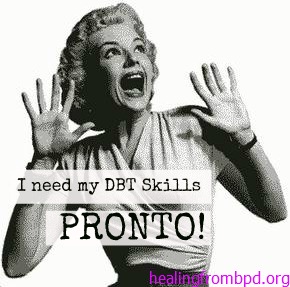A Preoccupation with Interpersonal Relationships
This feature is a new one that I have added to my “model” of BPD. I added it because I was attending the International Society for the Study of Personality Disorders (ISSPD) and listened to Dr. John Gunderson present a detailed model of his experience with BPD. The purpose of the presentation was to present a “real world” clinical model of BPD from the viewpoint of someone with many years of experience treating the disorder. One of the features that Dr. Gunderson provided was this “preoccupation with attachments.”
I believe this feature is born of an unstable sense of self. A person with BPD has difficulty “locating herself in the world.” While two of the other “core” features of BPD are “systems related” (meaning, those features are based on subsystems of the mind – the emotional regulation system, the impulsivity control system), shame and the preoccupation with interpersonal relationships are based more on a person with BPD’s view of herself. While it might seem that interpersonal relationships are outside of self, a more complex picture arises as we look more deeply into the mental configuration of BPD.
A recent study showed that the number one trigger of systems dysregulation (like wildly swinging emotions and impulsive behavior) is interpersonal distress. This interpersonal distress is more important as a trigger of dysregulated behavior than sweeping/major life changes – in fact major life changes, such as changing jobs, getting married, having a child – were ranked last of nine factors that trigger BPD distress. The interpersonal, moment-to-moment perception of the state of an important relationship is the most important trigger. That can be bad news for someone in a close relationship with someone with BPD. The person with BPD will be continuously scanning the interpersonal landscape for threats. Since shame is involved, people with BPD are likely to use others to regulate their internal systems and their self-view. In other words, a person with BPD uses others as a mirror to view their self.
Why is this so? I believe that a person with BPD’s lack of internal regulation causes her to internalize other people and use others to self-regulate. When someone has an inability to locate herself in the world, which very possibly arises from the emotional instability as a child, she seeks to have others locate her for her. She needs others to verify and validate that she’s “ok”. Unfortunately, because few of us are taught the language of emotional regulation, a person with BPD will likely learn that the interpersonal landscape is not safe; it is full of threats to their very self. It’s not an easy situation in which to live. If a person requires external validation and regulation, there develops a sense of a lack of control. Others are unpredictable, don’t understand how it feels and can damage the very core of her being.
People with BPD have described this internal feeling of emptiness and lack of internal controls as feeling “dead inside,” which is in itself, tragic. Extending this feeling to others through this preoccupation with close interpersonal relationships leaves a person with BPD with the feeling that others contribute to this unpleasant internal feeling. In other words, “it’s your fault that I feel this way.”
Many Non-BPD’s ask me why their loved ones with BPD don’t seem to trust them. To me, this aspect of BPD is a significant factor, along with other biological factors.
All of that being said, let’s suffice it to say that interpersonal relationships play a huge role in BPD. Social connections and attachments, including parent/child attachments, are the focus point of a person with BPD’s sense of well being. When these trigger dysregulation and/or ineffective modes of thinking and behavior, a person with BPD is lost in the world, floating free in a threatening sea of feelings, thoughts and behaviors.
One must understand that in order for the interpersonal tools to work properly, they need to be understood and applied in a step-wise fashion. I have often said to my list members that “you can’t boil the ocean” which means that you can’t jump to the end before you walk the path. You can’t do everything all at once. Instead, you have to take one small step at a time in a longer journey. The goal of all of my tools, attitudes, skills and approaches is (in my mind) a compassionate, trusting, respectful and two-way relationship in which both parties feel known, heard, understood and worthy. Achieving that goal is hitting a grand slam so to speak. Yet, I feel that a person must be given the fundamentals and practice those fundamentals before you can hit one out of the park. Emotions which are the first layer to unravel peel back from the onion that is BPD. Understanding emotions in oneself and others is vital to having a two-way relationship with someone with BPD.


